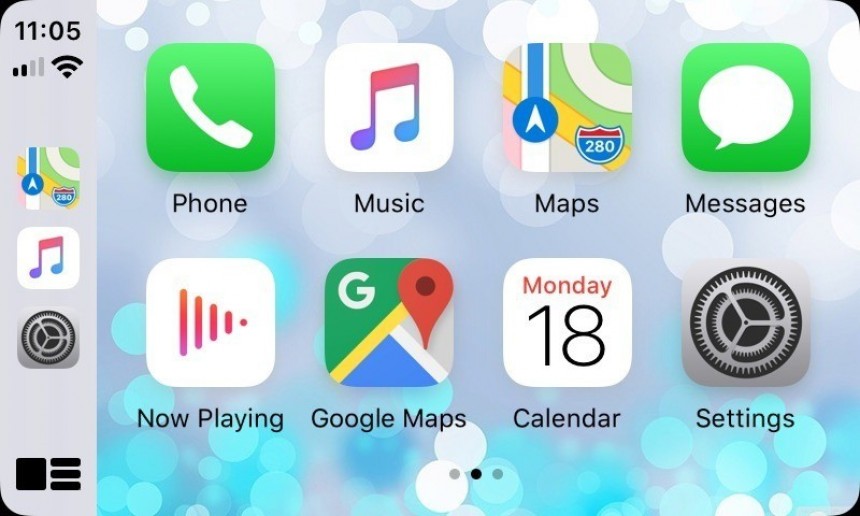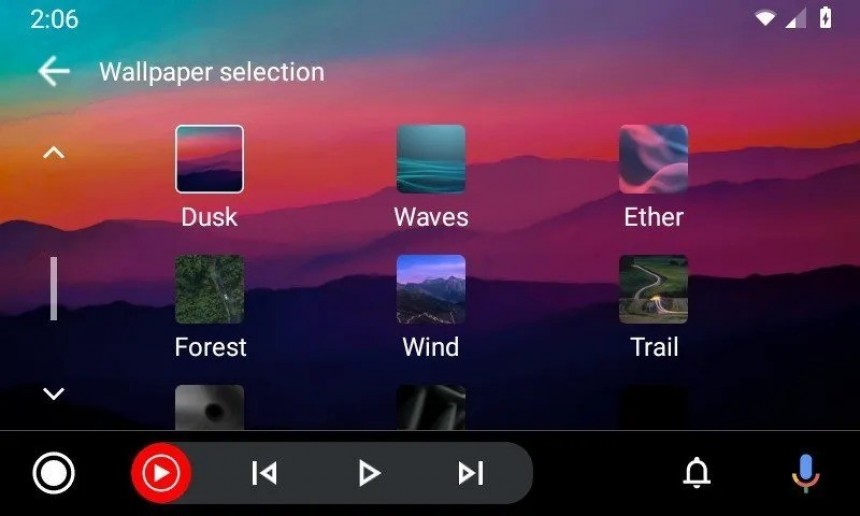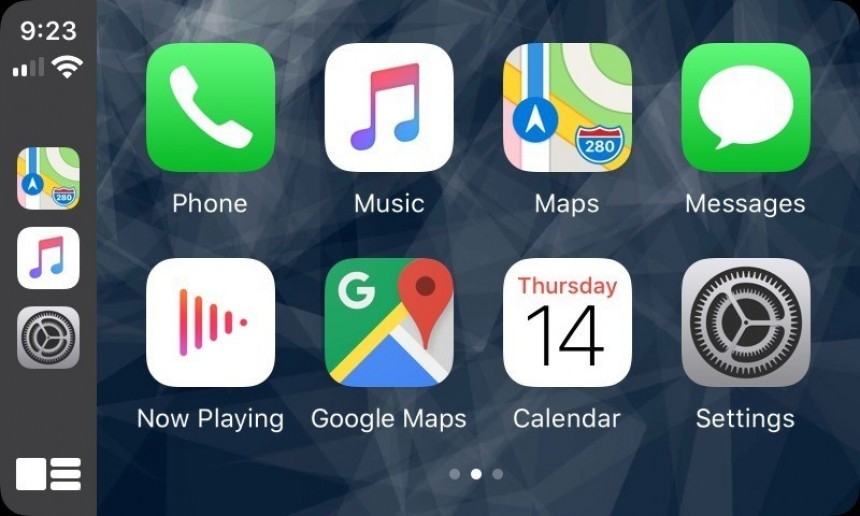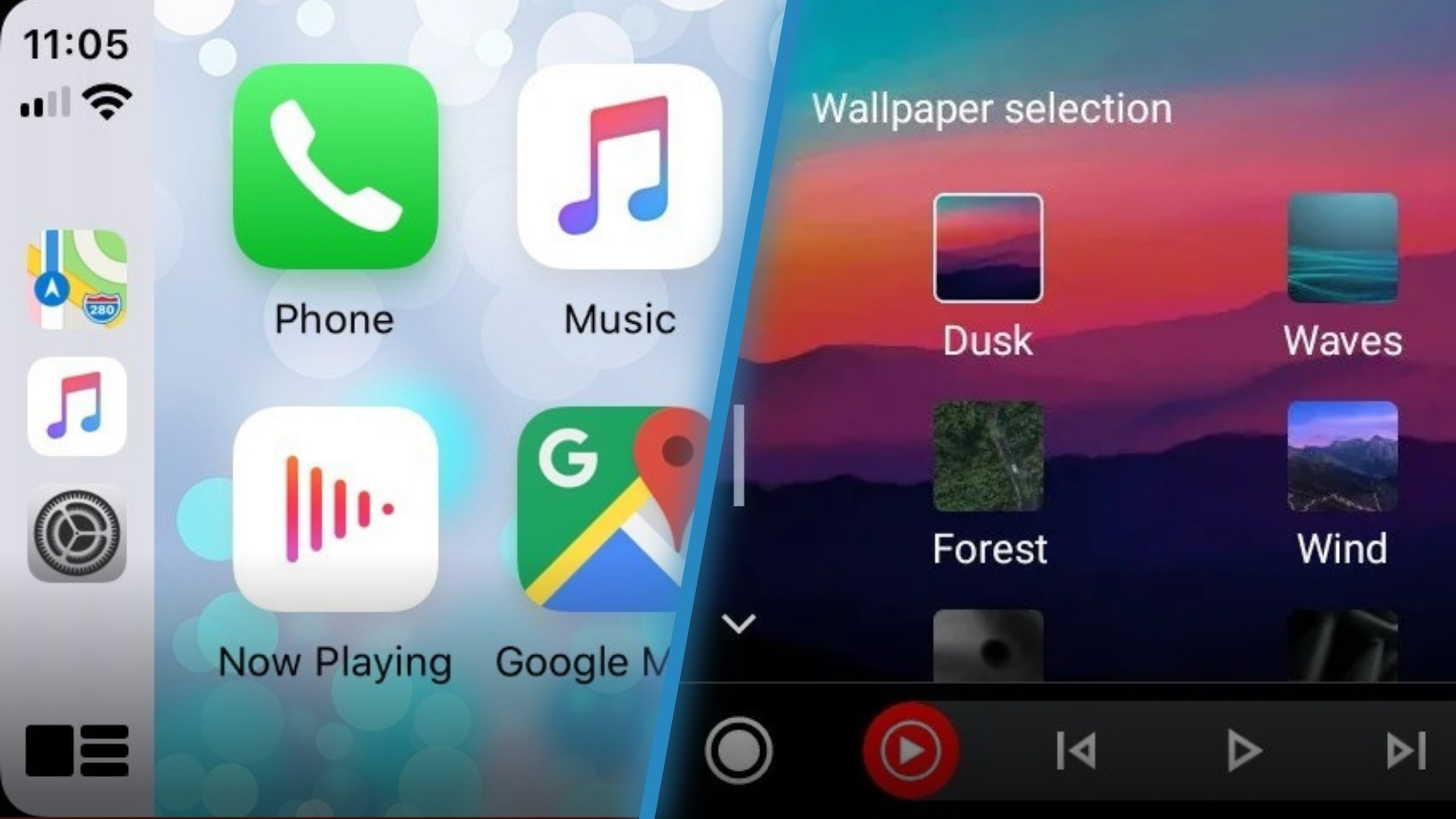Android Auto and CarPlay may seem like competing products, but their feature sets are incredibly similar. They both support almost the same categories of applications, and the same developers who release their software on one platform often join the other sooner or later.
Photo: Bogdan Popa/Automatic Evolution
Coolwalk and Dashboard are proof that Android Auto and CarPlay often offer a similar experience.
CarPlay introduced this feature with iOS 13’s debut in 2019, allowing users to run multiple apps side by side on the same screen. The dashboard was a great idea, as the limited screen space in infotainment screens no longer forces users to stick to a single app. The interface is divided into cards, and each car is assigned to a specific application category.
Navigation apps, music players, streaming services, and phone calls used cards to run on the same screen simultaneously, and users were allowed to switch to a full-screen interface with a single tap.
Google launched the Android Auto Coolwalk update in January this year after unveiling it in 2022. Coolwalk relies on a dashboard-inspired approach, using cards to allow multiple apps to run side by side regardless of screen size and aspect ratio. Coolwalk also offered more tweaks compared to the CarPlay dashboard, including support for a weather card to display the current temperature on the infotainment unit.
Higher feature request

Photo: Bakex
Android Auto and CarPlay allow users to configure the wallpaper, but both are limited to a pre-loaded set of images included in the apps.
Users can only choose from these wallpapers, and they are usually abstract wallpapers that mix different colors. They look good, but sooner or later, they become redundant, and users change them, aiming to get a new look on the infotainment screen.
Google and Apple sometimes add new wallpapers with software updates, expanding the collection of wallpapers with more pre-loaded elements.
However, both companies neglect to support custom wallpapers. Android Auto and CarPlay don’t allow users to set an image stored on their smartphone as the wallpaper in their cars, despite it being some of the top feature requests in both ecosystems.
Adding custom wallpaper support on Android Auto and CarPlay shouldn’t be a big deal, though I’m told Google has ignored the request so far due to potential memory and security issues. I’m sure Apple is in the same boat, as allowing custom photos would cause a glitch that both companies could avoid by simply not enabling the feature.

Image: Android Central
Google is already working on the next big thing when it comes to wallpapers.
The Mountain View-based search giant will also enable users to use the phone’s wallpaper as their Android Auto wallpaper. This means that the wallpaper on the lock screen or home screen (on a smartphone) can be synced with Android Auto, allowing the same image to become a wallpaper on the infotainment display as well.
Work on this feature is still in its early stages, and evidence of its presence has been spotted in the latest versions of Android Auto. The search company has remained tight-lipped about its plans, so it’s impossible to predict when it might start rolling it out to users. I’ve asked my contacts at Google about this feature, and no one has even been able to confirm its existence, so background sync support is probably still on the drawing board, with no substantial resources currently directed toward making it happen.
This does not mean that users cannot set their images as wallpapers when connecting smartphones to infotainment systems. They can, but the methods aren’t always aimed at less tech-savvy people.

Photo: Bakex
Jailbreaking your iPhone and installing utilities from different repositories is the most common way to enable custom wallpaper on CarPlay. A recent app has arrived on GitHub with a different approach, allowing users who installed it via the TrollStore to configure a custom wallpaper without unlocking their smartphones. The app does not add new wallpapers to the pre-loaded collection but replaces one of the images included by Apple. It’s simple and convenient, although I’m sure not everyone wants to install TrollStore to access these capabilities.
While Google is already working on improving background capabilities, Apple doesn’t seem interested in improving CarPlay in this direction. The company’s in-car experience has received minor updates recently, and iOS 17’s debut has mostly focused on mobile users rather than drivers.
Custom wallpaper support may seem like a waste of time and resources to users interested in other capabilities, but it’s an essential customization option that should have been there from the beginning. Users love the customization settings, as it allows them to tweak Android Auto and CarPlay to feel more personal and unique.
Neither Google nor Apple invest in customization options, forcing users to stick to the almost default setting in their cars. As software and the infotainment experience become an integral part of the driving experience in new generation cars, I expect both companies to focus more on these features, especially considering that Android Automotive is gaining ground and CarPlay 2.0 is just around the corner.

